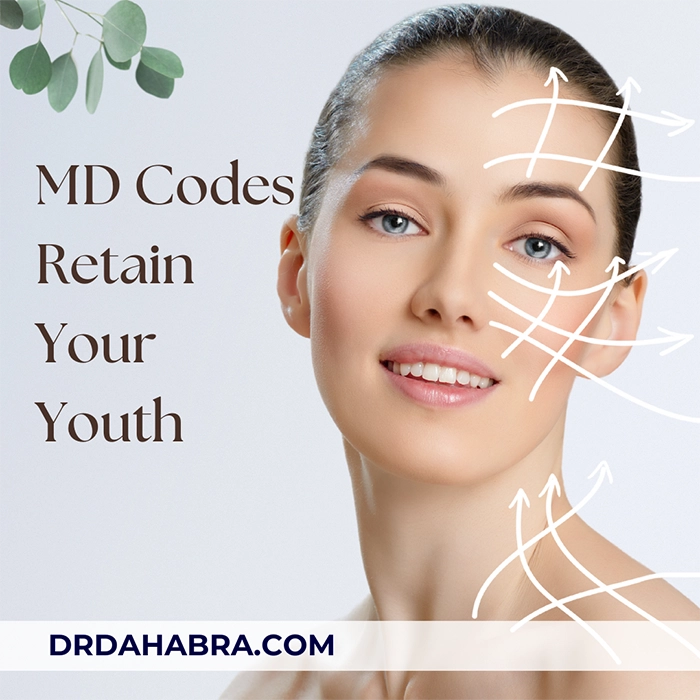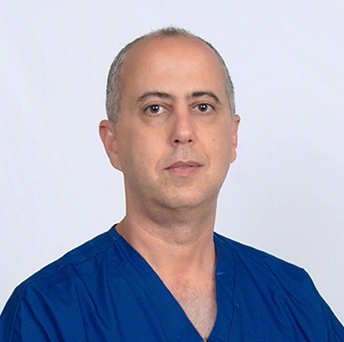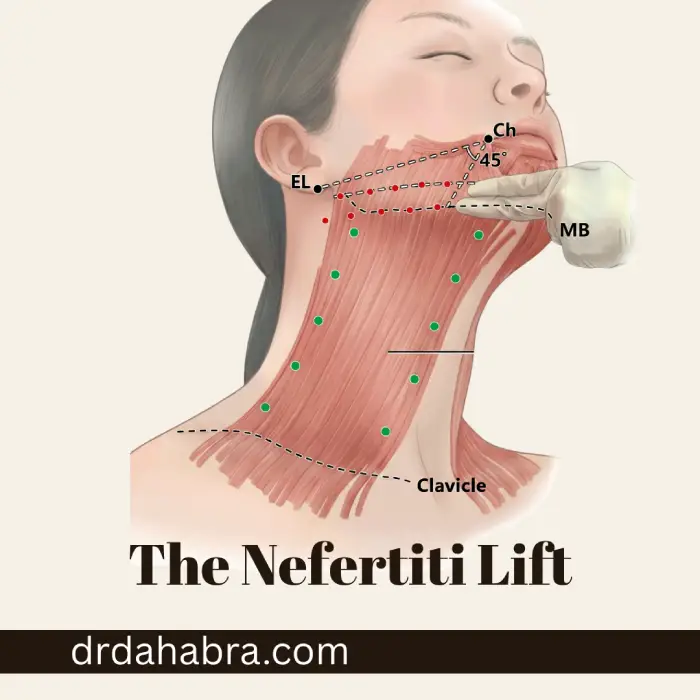Transformative MD Codes: Rejuvenate Your Face and Banish Saggy Skin
Understanding MD Codes in Aesthetic Medicine
MD Codes represent a revolutionary approach in aesthetic medicine, offering a structured framework for facial rejuvenation using hyaluronic acid (HA) fillers. This article talks about how to eliminate saggy tired looks and retain your youth.
Developed to enhance facial harmony, this system targets specific anatomical subunits to address signs of aging, such as saggy skin, tired expressions, and loss of volume. MD Codes aims to restore a youthful and attractive appearance by focusing on the emotional messages conveyed by facial features.
Unlike traditional methods that treat individual wrinkles or volume loss in isolation, MD Codes consider the entire facial structure. This comprehensive approach ensures that treatments are tailored to the unique needs of each individual, promoting natural-looking results.
By addressing the underlying causes of aging, MD Codes help patients achieve a refreshed and rejuvenated look.
The systematic nature of MD Codes minimizes variability in injection techniques, leading to improved patient satisfaction. Clinicians can deliver consistent and reproducible outcomes, enhancing the overall effectiveness of facial aesthetic treatments.
Table of Contents
1. Anatomical Unit Codes: Mapping the Face for Precision
2. Active Numbers: Determining Optimal Filler Volumes
3. Algorithmic Approach: Tailoring Treatments to Individual Needs
4. Systematic Methodology: Standardizing HA Filler Injections
5. Achieving Harmonized Results Through Comprehensive Planning
6. Enhancing Patient Satisfaction by Addressing Emotional Cues
7. Standardized Techniques: Ensuring Consistency Across Treatments
8. Holistic Approach: Beyond Treating Isolated Wrinkles
9. The 8-Point Lift: A Strategic Non-Surgical Facelift
10. Non-Surgical Facelift: Benefits and Considerations
11. Addressing Saggy Skin: Causes and Treatment Options
12. Maintaining Youthful Appearance: Long-Term Strategies
13. Risks and Recovery: What to Expect Post-Treatment
14. Comparative Analysis: MD Codes vs. Traditional Filler Techniques
15. Table: Factors Affecting the Cost of MD Codes Treatments
16. Frequently Asked Questions (FAQs)
17. Conclusion
18. References
1. Anatomical Unit Codes: Mapping the Face for Precision
Each MD Code corresponds to a specific anatomical subunit of the face, providing detailed information on injection depth, delivery tools, and techniques.
This precise mapping allows clinicians to accurately target areas such as the cheeks, chin, and jawline, ensuring optimal results. By understanding the unique characteristics of each facial region, practitioners can customize treatments to address individual concerns.
For instance, the “MD codes chin” focuses on enhancing the chin area to improve facial balance and definition. Similarly, codes targeting the midface can address saggy skin and volume loss, contributing to a more youthful appearance.
This level of specificity ensures that treatments are both practical and safe.
Using anatomical unit codes also facilitates communication among practitioners, promoting a standardized approach to facial rejuvenation. By adhering to these guidelines, clinicians can achieve consistent outcomes across different patients and treatment sessions.
2. Active Numbers: Determining Optimal Filler Volumes
Active Numbers within the MD Codes system indicate the minimum product volume required to achieve visible and reproducible results.
These guidelines assist clinicians in determining the appropriate amount of HA filler needed for each facial area, minimizing the risk of over- or under-treatment. By following these recommendations, practitioners can enhance treatment efficacy and patient satisfaction.
For example, treating the tear trough area may require a specific volume to address under-eye hollows effectively. By adhering to the Active Numbers, clinicians can ensure that the filler is distributed evenly, resulting in a natural and refreshed look.
This approach also helps manage patient expectations regarding the amount of product used and the anticipated outcomes.
Incorporating Active Numbers into treatment planning promotes a data-driven approach to facial rejuvenation. Clinicians can make informed decisions based on standardized guidelines, enhancing aesthetic procedures’ overall quality and consistency.
3. Algorithmic Approach: Tailoring Treatments to Individual Needs
MD Codes utilize algorithms that guide treatment planning by addressing unfavorable facial attributes and enhancing positive ones.
To develop personalized treatment plans, these algorithms consider facial anatomy, aging patterns, and emotional expressions. By leveraging this structured approach, clinicians can deliver targeted interventions that align with each patient’s aesthetic goals.
For instance, a patient presenting with a tired or sad appearance may benefit from treatments that lift the midface and restore volume to the cheeks. Following the algorithmic guidelines, practitioners can identify the most effective injection points and techniques to achieve the desired outcome.
This method ensures that treatments are both efficient and tailored to individual needs.
The algorithmic approach also facilitates comprehensive assessments, enabling clinicians to address multiple concerns in a single treatment session. By considering the interplay between different facial regions, practitioners can create harmonious and balanced results that enhance overall facial aesthetics.
4. Systematic Methodology: Standardizing HA Filler Injections
The MD Codes system provides a structured and standardized method for HA filler injections, minimizing variability in technique and improving patient satisfaction.
By adhering to predefined codes and guidelines, clinicians can ensure consistency in treatment delivery, leading to predictable and reliable outcomes. This systematic methodology enhances the safety and efficacy of facial aesthetic procedures.
Standardization also facilitates training and knowledge transfer among practitioners, promoting best practices within aesthetic medicine. Clinicians can build upon a shared framework, fostering collaboration and continuous improvement.
This approach ultimately benefits patients by ensuring high-quality care across providers and settings.
Moreover, the systematic nature of MD Codes supports ongoing research and innovation in facial rejuvenation techniques. By providing a consistent foundation for clinical studies, the system enables the development of evidence-based practices that advance the field of aesthetic medicine.
5. Achieving Harmonized Results Through Comprehensive Planning
By addressing the whole facial structure and emotional messages, MD Codes help create natural and harmonious results.
This comprehensive planning considers the interrelationships between different facial regions, ensuring that treatments enhance overall facial balance and symmetry. Clinicians can deliver seamless and aesthetically pleasing outcomes by focusing on the face as a cohesive unit.
For example, augmenting the cheeks can have a positive impact on the under-eye area, reducing the appearance of tiredness. Similarly, enhancing the jawline can improve the definition of the lower face, contributing to a more youthful profile.
By considering these interconnected effects, practitioners can maximize the benefits of each treatment.
Comprehensive planning also allows for anticipating and managing potential complications, enhancing patient safety. By understanding the anatomical and functional relationships within the face, clinicians can minimize risks and optimize treatment outcomes.
6. Enhancing Patient Satisfaction by Addressing Emotional Cues
Focusing on reducing unfavorable attributes and enhancing positive ones increases patient satisfaction.
MD Codes prioritize correcting facial expressions that convey negative emotions, such as sadness or fatigue, by restoring volume and structure to key areas. This approach improves physical appearance and positively influences patients’ self-perception and confidence.
By aligning treatments with patients’ emotional goals, clinicians can deliver results that resonate more deeply. For instance, lifting the corners of the mouth can transform a downturned expression into a more approachable and cheerful appearance.
Such changes can have a profound impact on social interactions and overall well-being.
Moreover, addressing emotional cues through aesthetic treatments fosters a holistic approach to patient care. By considering physical and psychological aspects, practitioners can enhance their patients’ overall quality of life.
7. Standardized Techniques: Ensuring Consistency Across Treatments
MD Codes provide a structured approach to injection techniques, ensuring consistency and reproducibility of results.
By following standardized protocols for injection depth, delivery tools, and techniques, clinicians can minimize variability and achieve predictable outcomes. This consistency is crucial for maintaining high standards of patient care and satisfaction.
Standardized techniques also facilitate the training and development of new practitioners, promoting uniformity in skill levels across the field. By adhering to established guidelines, clinicians can build confidence in their abilities and deliver treatments with precision and accuracy.
Furthermore, consistency in injection techniques enhances patient trust and confidence in aesthetic procedures. Knowing that treatments are performed according to rigorous standards can alleviate concerns and encourage individuals to pursue facial rejuvenation options.
8. Holistic Approach: Beyond Treating Isolated Wrinkles
By targeting structural support rather than just surface imperfections, MD Codes help maintain youthful skin over time.
Treating only individual wrinkles can sometimes create an unnatural look while addressing deeper tissue layers brings more natural, attractive results. It’s a bit like renovating the foundation of a house instead of just painting the walls—you’re ensuring long-term beauty and stability.
Additionally, this holistic method focuses on emotional attributes. Saggy skin under the eyes or saggy skin around the mouth isn’t just about aging; it communicates sadness or tiredness.
Through strategic filler placement using MD codes filler techniques, you’re not just smoothing the skin but changing the story your face tells the world. This emotional transformation is why the MD Codes approach is so revolutionary.
Finally, combining this with broader lifestyle habits—like good skincare, nutrition, and hydration—further amplifies the impact. A holistic approach not only treats visible signs but supports a strategy to maintain a youthful appearance that lasts for years.
9. The 8-Point Lift: A Strategic Non-Surgical Facelift
The 8-Point Lift is one of the most famous techniques developed alongside MD Codes to achieve a non-surgical facelift.
It involves injecting dermal fillers at eight specific points across the face to restore volume, improve contour, and subtly lift sagging skin. This method is beneficial for addressing saggy skin under the chin, saggy skin after pregnancy, and saggy skin around the mouth.
Each injection point is selected based on its structural significance, meaning small changes can have significant, transformative effects. Think of it like adjusting key screws in a machine—you don’t have to overhaul everything to make it work better.
With this focused, innovative method, patients often notice an immediate rejuvenation without any cuts or scars.
Another major advantage?
The 8-Point Lift can be customized. If someone has saggy skin on their face due to saggy skin after weight loss, their injection points might differ slightly from someone whose concerns center around saggy skin from weight loss or saggy skin before and after weight fluctuations.
10. Non-Surgical Facelift: Benefits and Considerations
A non-surgical facelift using MD Codes techniques brings many benefits over traditional surgery.
For one, the risk and downtime are dramatically reduced. There are no general anesthesia, cutting, or long recovery periods. You could walk into a clinic for tired face treatment and leave looking fresher the same day!
Another big win? The results look incredibly natural. Because fillers restore lost volume and enhance the natural architecture of your face, you won’t get that “pulled” or “stretched” look that sometimes happens with surgeries.
Instead, you maintain youthful looks subtly and effectively.
Of course, it’s essential to manage expectations. Non-surgical treatments can’t replicate the dramatic lifting of a complete facelift in extreme cases of saggy skin on legs or very severe sagging.
However, the results can be astonishingly good for early to moderate aging signs—especially saggy skin under the eyes or mild midface sagging.
11. Addressing Saggy Skin: Causes and Treatment Options
Saggy skin can happen for many reasons—aging, weight loss, pregnancy, sun exposure, or genetics.
As collagen and elastin (the proteins that keep our skin firm) break down, saggy skin on the face and other areas becomes more apparent. MD Codes treatments target these issues precisely, offering solutions focusing on lifting and volume restoration.
Common treatments include MD Codes filler placement to support facial structures, non-surgical facelift techniques, and targeted injections for areas like the chin (MD Codes chin) and cheeks.
Treatments can also include maintenance strategies to sustain results and prevent further sagging.
Beyond fillers, skincare (like retinoids and peptides) and lifestyle changes (like good sleep, hydration, and a healthy diet) can dramatically influence how long you maintain youthful skin after treatments. Addressing saggy skin before and after changes through a holistic plan ensures longer-lasting rejuvenation.
12. Maintaining Youthful Appearance: Long-Term Strategies
The longevity of results with MD Codes is highly achievable with good habits.
Regular maintenance treatments every 12–18 months help maintain a youthful appearance and stave off further volume loss or sagging. It’s like taking your car in for regular service—you keep everything running smoothly!
Lifestyle plays a huge role, too. Protecting your skin from the sun, eating antioxidant-rich foods, staying hydrated, and avoiding smoking help maintain youthful skin. Regular use of targeted skincare can boost collagen production and prevent premature aging.
Psychologically, maintaining youth isn’t just about appearance—it’s about confidence and emotional well-being. When your face looks energized and youthful, you feel it internally.
That’s why a tired face treatment doesn’t just refresh your look; it refreshes your whole vibe.
13. Risks and Recovery: What to Expect Post-Treatment
Like any procedure, using MD code fillers has its risks, though they are generally minimal.
Common side effects include mild swelling, redness, and bruising at the injection sites. These typically resolve within a few days, making it a low-downtime solution for saggy skin under the eyes or the chin.
More serious complications like vascular occlusion (blocking of a blood vessel) are rare but highlight the importance of choosing an experienced injector. Always look for practitioners trained extensively in MD Codes methodology to minimize risks.
Recovery is usually straightforward: avoid intense exercise, excessive sun exposure, and touching the treated areas for at least 24–48 hours. Most people see their best results within a week—refreshed, lifted, and naturally youthful!
14. Comparative Analysis: MD Codes vs. Traditional Filler Techniques
Traditional filler techniques often focus on filling individual wrinkles or folds—spot-treating symptoms rather than addressing the root cause. In contrast, MD Codes treat the entire facial structure to create balance, lift, and emotional positivity.
For instance, instead of filling in the nasolabial folds (laugh lines), MD Codes techniques lift the cheeks, smoothing those lines without the “puffy” overfilled look. It’s the difference between putting a Band-Aid on a problem and healing it.
Patients undergoing MD Codes treatment often maintain youthful looks longer and use fewer filler products than traditional methods. The systematic and emotional focus makes all the difference in achieving truly natural, harmonious results.
15. Table: Factors Affecting the Cost of MD Codes Treatments
Factor Explanation Impact on Cost
Practitioner Expertise More experienced injectors often charge higher fees due to their skill level. Higher cost
Geographic Location Urban or high-demand areas (like Miami, Florida) generally have higher pricing. Higher cost
Product Used Premium fillers like Juvederm Voluma cost more than standard HA fillers. Higher cost
Treatment Area Size Larger areas needing more filler (like full-face rejuvenation) cost more. Higher cost
Number of Syringes More filler volume required = higher total cost. Higher cost
Clinic Reputation High-end clinics charge more for luxury service and perceived quality. Higher cost
Customization Level Highly tailored treatments using MD Codes algorithms may involve more strategic filler use. Higher cost
Follow-up Treatments Maintenance sessions can add to the overall lifetime cost. Higher cost
Technology Use Clinics using advanced imaging or assessment tools might charge extra. Slightly higher cost
Special Promotions Discounts or package deals can lower the cost per syringe. Lower cost
16. Frequently Asked Questions (FAQs) On How To Eliminate Saggy Tired Sad Looks and Retain Your Youth
Q1. What is the MD code CK1?
Concise Answer: CK1 refers to a specific MD Code point for correcting the cheek’s contour.
Detailed Answer: CK1 is one of the cheek area points targeted during MD Codes treatments. It explicitly addresses volume loss and contour deficits in the midface, helping lift saggy skin and enhance overall facial harmony.
Q2. What is the MD code aesthetic?
Concise Answer: MD Codes aesthetic is a structured approach to facial rejuvenation using filler injections.
Detailed Answer: MD Code aesthetic treatments are designed to map facial anatomy with precise points where dermal fillers should be injected. This approach ensures that enhancements are strategic, lifting tired areas and maintaining youthful looks instead of randomly filling wrinkles.
Q3. What is the MD code method?
Concise Answer: The MD Code method uses anatomical codes to guide structured filler injections for facial harmony.
Detailed Answer: This method was developed to create standardized, reproducible, and emotionally positive results by treating the entire facial structure, using predefined codes rather than guesswork for tired face treatments or saggy skin fixes.
Q4. What is the code for dermal fillers?
Concise Answer: There’s no universal CPT code, but codes like 11950-11954 are used for reporting filler injections.
Detailed Answer: Medical insurance coding for fillers often falls under codes describing tissue or dermal injections, primarily used when medically necessary. Aesthetic fillers are usually out-of-pocket services and are not typically covered by insurance.
Q5. Why does my face look tired and droopy?
Concise Answer: Loss of collagen, volume, and skin elasticity leads to a tired, droopy face.
Detailed Answer: Aging, lifestyle habits, stress, and genetics cause structural support loss, making features droop and giving the impression of fatigue or sadness. Treatments like MD Codes filler restores volume and lift the saggy skin around the mouth, eyes, and cheeks.
Q6. How can I tighten my saggy skin on my face?
Concise Answer: Non-surgical facelifts, fillers, radiofrequency treatments, and skincare can tighten saggy skin.
Detailed Answer: To tighten saggy skin on the face, techniques like MD Codes filler placement, energy-based devices (like Ultherapy), and topical retinoids stimulate collagen and lift tissue without surgery.
Q7. How can I maintain my younger look?
Concise Answer: Good skincare, sun protection, healthy living, and occasional aesthetic treatments maintain youth.
Detailed Answer: Maintaining a youthful appearance involves a combo of daily SPF, hydrating skincare, eating nutrient-rich foods, staying hydrated, regular exercise, and filler treatments like the 8-point lift for structural support.
Q8. How do you maintain your looks as you age?
Concise Answer: Protect your skin, nourish your body, and strategically enhance facial structure.
Detailed Answer: You can maintain youthful looks by reducing sun exposure, adopting anti-aging skincare, eating antioxidants, and using MD Codes to strategically refresh and support key facial areas without altering your natural beauty.
Q9. How can I look 10 years younger naturally?
Concise Answer: Healthy habits, targeted fillers, and skin treatments can help you look 10 years younger.
Detailed Answer: Combining filler treatments (like non-surgical facelifts using MD Codes), collagen-boosting facials, proper skin care, hydration, and good sleep hygiene gives your face the lift and glow of a decade younger—naturally!
Q10. How to reverse the aging process?
Concise Answer: While you can’t completely reverse aging, you can slow and visibly soften its effects.
Detailed Answer: Reversing aging signs involves a comprehensive approach: MD Codes fillers to restore volume, energy devices to tighten, antioxidant skincare, lifestyle changes, and stress management—all together to maintain youthful skin.
Q11. Is it possible to stay looking young?
Concise Answer: Yes, through innovative skincare, healthy habits, and aesthetic treatments.
Detailed Answer: Staying young-looking relies on protecting your collagen bank early, regular maintenance treatments like non-surgical facelifts, smart nutrition, and early intervention when saggy skin under the chin or around the mouth starts appearing.
Q12. What vitamin deficiency causes sagging skin and a tired look?
Concise Answer: Deficiencies in Vitamin C, E, D, and collagen-building nutrients cause sagging skin.
Detailed Answer: Vitamins C and E support collagen production and skin elasticity. You may see saggy skin from weight loss or premature aging signs like under-eye hollowness and dullness when deficient.
Q13. How to reduce premature skin aging?
Concise Answer: Protect from the sun, avoid smoking, manage stress, and boost collagen production.
Detailed Answer: Wearing sunscreen daily, quitting smoking, getting antioxidants through diet and supplements, and using retinoids and fillers like MD Codes help maintain youthful skin and delay sagging.
Q14. How to tighten face skin after 50?
Concise Answer: MD Codes filler, radiofrequency, and collagen-boosting skincare tighten skin after 50.
Detailed Answer: After 50, structural volume loss accelerates. Using MD Codes fillers for non-surgical lifts, energy-based treatments to stimulate collagen, and potent skincare ingredients like peptides dramatically tighten facial contours.
Q15. Why is my face sagging at 20?
Concise Answer: Rapid weight loss, genetics, or unhealthy lifestyle habits may cause early sagging.
Detailed Answer: Even young individuals can experience saggy skin after weight loss or due to genetic predisposition. Preventative skincare, healthy nutrition, and small, strategic MD Codes filler interventions can correct early signs.
17. Conclusion: Eliminate Saggy Tired Looks and Retain Your Youth
In aesthetic medicine, MD Codes have completely transformed facial rejuvenation.
This structured approach doesn’t just smooth out wrinkles—it lifts, harmonizes, and emotionally transforms your appearance. By targeting saggy skin on the face, saggy skin under the eyes, and saggy skin after pregnancy, you can finally retain your youthful vibrancy without surgery.
MD Codes are your blueprint if you dream of maintaining a youthful appearance strategy that fits naturally with who you are. They aren’t about masking your face but bringing out your best, most vibrant self.
Whether it’s a non-surgical facelift or correcting the saggy skin under the chin, the right plan can make a difference.
Embrace the future of facial rejuvenation.
Feel confident and refreshed, and reclaim the youthful glow that reflects your inner energy.
MD Codes are not just injections—they’re the art of helping you maintain youthful skin and continue feeling unstoppable.
We have covered everything on how to eliminate saggy tired looks and retain your youth.
Everything You Need to Know on How to Eliminate Saggy Tired Looks and Retain Your Youth With Dr. Dahabra
Experience the detailed guide on how to eliminate saggy tired looks and retain your youth with Dr. Dahabra. Why wait to unlock your beauty?
Call us now at (954) 595-2607 or book online. Your journey begins with just a click or a call.
Embrace the beauty, embrace innovation – Embrace You.
18. References
- Beverly Hills Wellness Center & Med Spa, Florida
- Plantation Med Spa, Florida
- West Palm Beach Med Spa
- MD Codes™: A Comprehensive Guide for HA Filler Injections
- Facial Aging and Volume Loss: Understanding MD Codes
- Anatomical Considerations in Facial Aesthetic Injections
- The Role of Hyaluronic Acid Fillers in Maintaining Facial Youth
- Understanding Emotional Attributes Through Facial Aesthetics
- Safety and Complications of Dermal Fillers
- Optimizing Outcomes with the 8-Point Lift Technique
- Long-Term Effects of Non-Surgical Facial Rejuvenation
- Patient Satisfaction in Cosmetic Injectables
- Advances in HA-Based Fillers for Facial Rejuvenation




